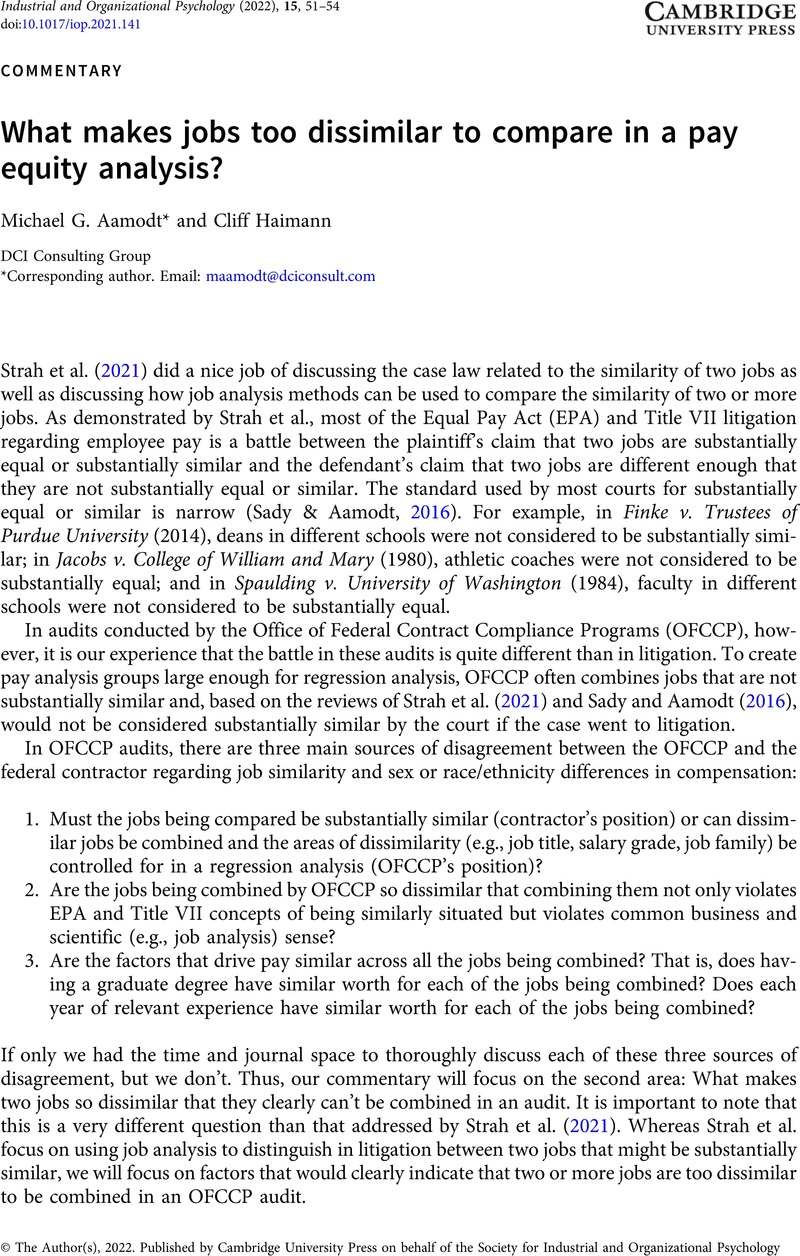No CrossRef data available.
Article contents
What makes jobs too dissimilar to compare in a pay equity analysis?
Published online by Cambridge University Press: 29 March 2022
Abstract
An abstract is not available for this content so a preview has been provided. Please use the Get access link above for information on how to access this content.

- Type
- Commentaries
- Information
- Copyright
- © The Author(s), 2022. Published by Cambridge University Press on behalf of the Society for Industrial and Organizational Psychology
References
Finke v. Trustees of Purdue University, 2014 WL 2938384 (N.D. Ind. <LQ_GJAZRF>2014</LQ_GJAZRF>).2014).>Google Scholar
Sady, K., & Aamodt, M. G. (2016, August). We might be paid differently, but are our jobs really the same? [Conference presentation]. National Industry Liaison Group.Google Scholar
Sady, K., Aamodt, M. G., & Cohen, D. (2015). Compensation equity: Who, what, when, where, why, and how. In Hanvey, C. and Sady, K. (Eds.), Practitioner’s guide to legal issues in organizations (pp. 251–272). Springer. DOI 10.1007/978-3-319-11143-8_10
Google Scholar
Strah, N., Rupp, D. E., & Morris, S. (2021). Job analysis and job classification for addressing pay inequity in organizations: Adjusting our methods within a shifting legal landscape. Industrial and Organizational Psychology: Perspective on Science and Practice, 15(1), 1–45.Google Scholar




